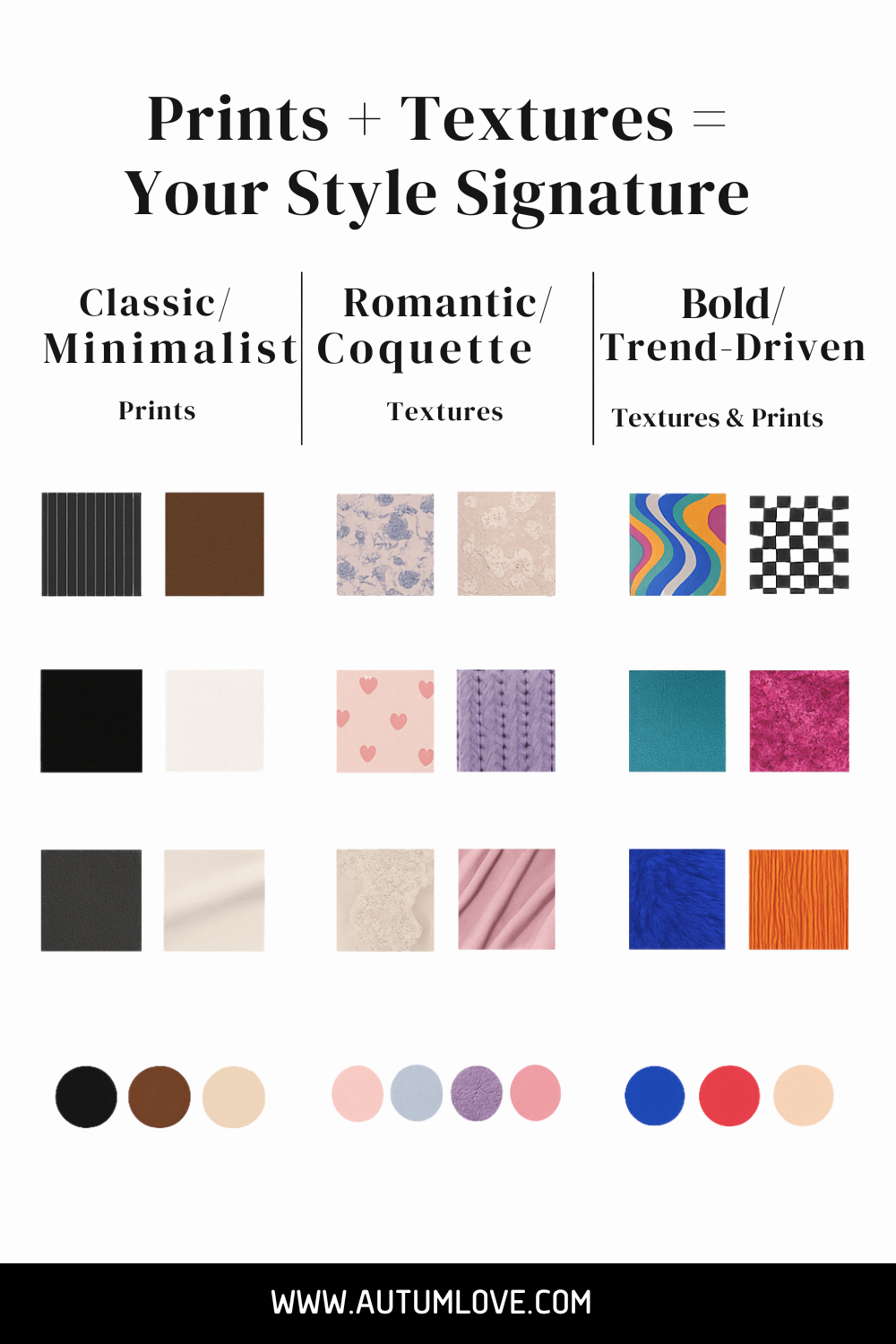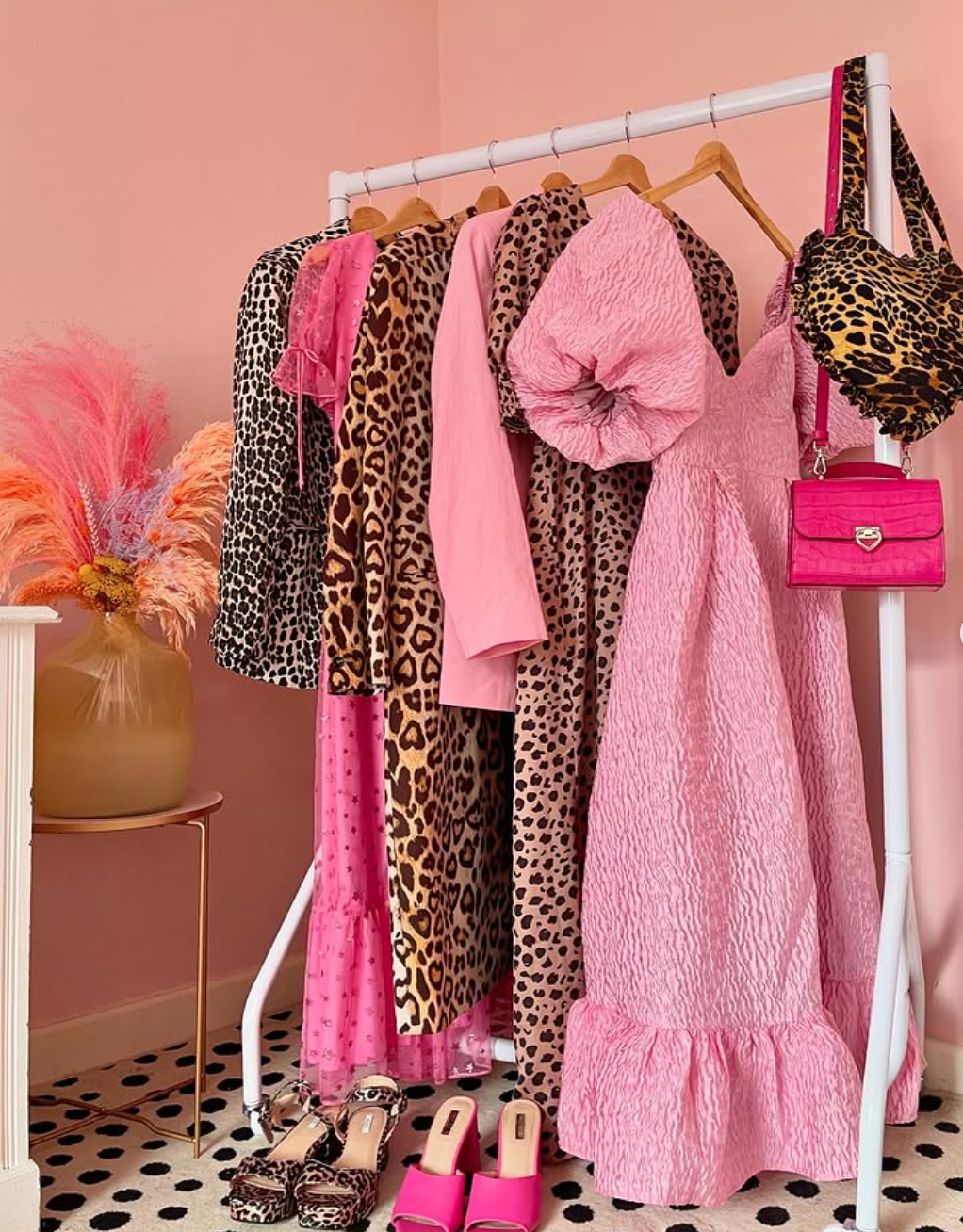Why Your Closet Feels All Over the Place (And How a Color Palette Fixes It)
Photo Credit:@tawanamorris_
Let’s be real,most of the “how to pick a color palette for your wardrobe” advice out there sounds like it was pulled straight from a makeup counter. Cool undertones, warm hues, color seasons… girl, are we dressing a body or painting a wall?
Now here’s what actually happens: You find a top you love. You buy it. And when you get home, it goes with nothing. Not a single pair of pants. Not even your favorite jacket. So back into the abyss of your closet it goes—cute, but completely useless.
That’s where a real-world color palette comes in.
This isn’t about figuring out what color “flatters your skin tone.” This is about making sure every single thing in your closet plays well together. If you buy a new top today, you should already have two bottoms, one shoe, and a jacket that it works with. That’s the fun of a functional wardrobe color palette. It cuts the guesswork, keeps your closet tight, and helps you shop smarter (and stop wasting money on cute-but-random pieces that never leave the hanger).
And yes, I do have a color palette for my own closet. But not because I’m trying to be a fashion purist. I just like being able to throw on a look without spiraling.
Before we go any further, download the free wardrobe color palette template right here so you can follow along and build your own.
Already thinking ahead? If you want the full system that shows you how to use your palette to plan actual outfits, take a peek at The Intentional Wardrobe Workbook.
This guide isn’t about rules. It’s about freedom. Let’s get into it.
Why the Typical Advice Doesn’t Work
Photo by Vladimir Yelizarov
Let’s clear something up: You are not foundation shopping. You are building a wardrobe.
And yet, 90% of the advice out there about color palettes starts with, “First, figure out your skin’s undertone.” Which is great… if you’re buying concealer. But when it comes to your actual closet—what you reach for at 7:42 a.m. before school drop-off or before that Zoom call—your undertone has nothing to do with it.
That’s not to say seasonal color analysis is wrong. It’s just not the point.
Because even if you look stunning in coral, what good is that information if you never feel comfortable wearing it? If it doesn’t go with your favorite pants or your go-to shoes? Or if your entire wardrobe is filled with soft neutrals and suddenly that one “perfect for your complexion” top feels like the oddball?
I went down the Reddit rabbit hole not too long ago, and I saw so many women struggling with this exact problem. They were trying to follow charts and guides that told them what colors should work on paper—but ended up building a palette that didn’t match their real-life preferences. One woman literally said she felt stuck because “as soon as I add a single color, it’s too much color.”
Mistake: Picking colors based on what flatters, not what you’ll actually wear.
Here’s the truth: The most flattering color is the one you actually feel good in. The one you’ll wear on repeat. The one that works with the other stuff already in your closet.
So instead of asking, “What looks good on me?” try asking:
“What do I naturally reach for?”
“What colors are already in my favorite outfits?”
“What don’t I wear—and why?”
This shift changes everything. Because building a wardrobe color palette isn’t about finding the “right” colors. It’s about picking your colors—the ones that make getting dressed easier, not more complicated.
How to Actually Build Your Wardrobe Color Palette (Without Overthinking It)
Photo Credit:@osullliv
Start With Your Lifestyle
Before we even talk colors, think about your day-to-day. Not your job title. Not where you should be going. Just: What do you actually do in your clothes?
Are you someone who…
Gets dressed quickly in the morning and needs everything to work together?
Wants outfits that feel low-effort but still pulled together?
Loves getting dressed but wants fewer “nothing goes” moments?
Your color palette should support the way you live—not complicate it.
Instead of guessing what’s supposed to work, ask yourself:
What colors am I naturally drawn to?
What do I already own that I wear on repeat?
What shades make me feel like myself?
This is your foundation—not Pinterest’s. No color wheel required.
Redefining Base, Accent, and Print Colors (The Way That Actually Makes Sense)
Let’s throw out the old-school method that tells you to “pick two base colors, three accent colors, and two prints.” You’re not building a house—you’re building a closet that reflects your actual style.
Here’s how we do it instead:
Base Colors = The Clothes You Actually Wear a Lot
Not just your pants. Not just neutrals. These are the colors that show up in your wardrobe most often, no matter the item.
If you wear a lot of black, black is a base color. If you reach for olive tees and tan trousers all the time, those are base colors too. Your base colors could even include navy, blush, chocolate brown, or red—if they’re consistent and foundational to how you dress.
Think of base colors as the core you naturally build around.
And your style type influences this too:
Classic or Minimalist? Your base might be black, white, gray, and tan.
Coquette or Romantic? Soft blues, sage greens, or blush pink could be your go-to base.
Bold or Trend-Driven? You might treat red, royal blue, or kelly green as your version of a “neutral.”
Accent Colors = The Pieces That Add Personality (But You Still Wear Often)
Accent doesn’t have to mean neon or loud. It’s simply a color you like seeing in your outfits, even if it’s not the main star.
Some women have ten. Some have one. Autum’s accent color? Pink. Just pink. That’s it. And it works.
If you’re not sure what yours are, look at:
The colors of tops, accessories, or statement pieces you always keep
That one color you’re always drawn to when online shopping
The piece you get the most compliments on
Pro tip: Your accent colors should feel like “you”—not like the mannequin at Zara.
Prints + Textures = Your Style Signature
Forget matching your prints to your undertones. Instead, look for prints that feel like you and include colors already in your palette.
If you love animal print? Great—make sure that print includes a color already in your base. If you love florals, stripes, polka dots, or vintage graphics—go for it. Your prints should fit in, but they should also stand out.
And don’t sleep on texture:
Waffle knits
Lace
Satin
Fringe
Pleats
Quilted fabrics
Beaded or pearl details
Adding texture lets you keep the same color scheme but still have fun and dimension in your outfits.
What a Color Palette Actually Does (That No One Talks About)
Photo Credit:@novasistas
Let’s be real. You don’t need a color palette to get dressed. But if your goal is to make outfits easier (and faster), this is the cheat code.
A color palette doesn’t mean your closet becomes all beige or black. It just means you have a system that works in your favor—a visual plan that helps everything feel a little more…put together.
Here’s what a real color palette actually does:
It Makes Shopping a Whole Lot Easier
You stop buying “the cute top” just because it’s on sale—and start asking, does this even match anything I own?
With a palette, the answer’s already clear. You’ll know in 5 seconds whether a piece belongs in your cart or not.
It Ends the “What Do I Wear With This?” Spiral
We’ve all been there—holding up a cute blouse with no clue what pants to pair it with.
A defined color palette cuts that out completely. If the item’s in your palette, it already plays nice with everything else.
Photo Credit:@catlpatterson
It Speeds Up Your Outfit Decisions
When most of your closet lives in the same color family (even loosely), you don’t need a style board or fashion degree to pull something together.
Your pants match your tops. Your layers go with your dresses. Getting dressed becomes as easy as grabbing what feels good that day.
It Makes Your Closet Feel Cohesive—Without Looking Boring
Here’s the thing: having a palette doesn’t mean everything has to match or that you’re limited to 3 colors. It just means your wardrobe flows.
Even if your palette includes bright pink, citron yellow, or lavender—when it’s intentional, it works.
And Honestly? It Feels Good to Know It All Goes Together
When I shop now, I don’t guess.
I can hold something up and say, “Oh, I’ve got that tan trouser and that striped scarf that’ll go perfectly.”
That’s the power of having a palette that fits your style—not your skin tone, not some color theory textbook—your life.
FAQs (Because You’re Not the Only One Wondering)
Q: What if I like black and brown?
Wear both. Seriously. Style isn’t a math test—you’re allowed to blend what you like. Black and brown together? Chic when done right.
Q: Can I change my palette each season?
Yes. Some people rotate their palettes like they rotate their wardrobes—think deeper tones in fall, softer shades in spring. It’s your system.
Q: Do I need to toss the stuff that doesn’t match?
Nope. Use your palette as a guide, not a rulebook. You might style those “off-palette” pieces differently, or just wear them when you want to switch things up. They’re not banished—they’re just not part of your everyday mix
Creator Images used for editorial purposes only. All rights belong to their respective creators. We always link and give credit.









